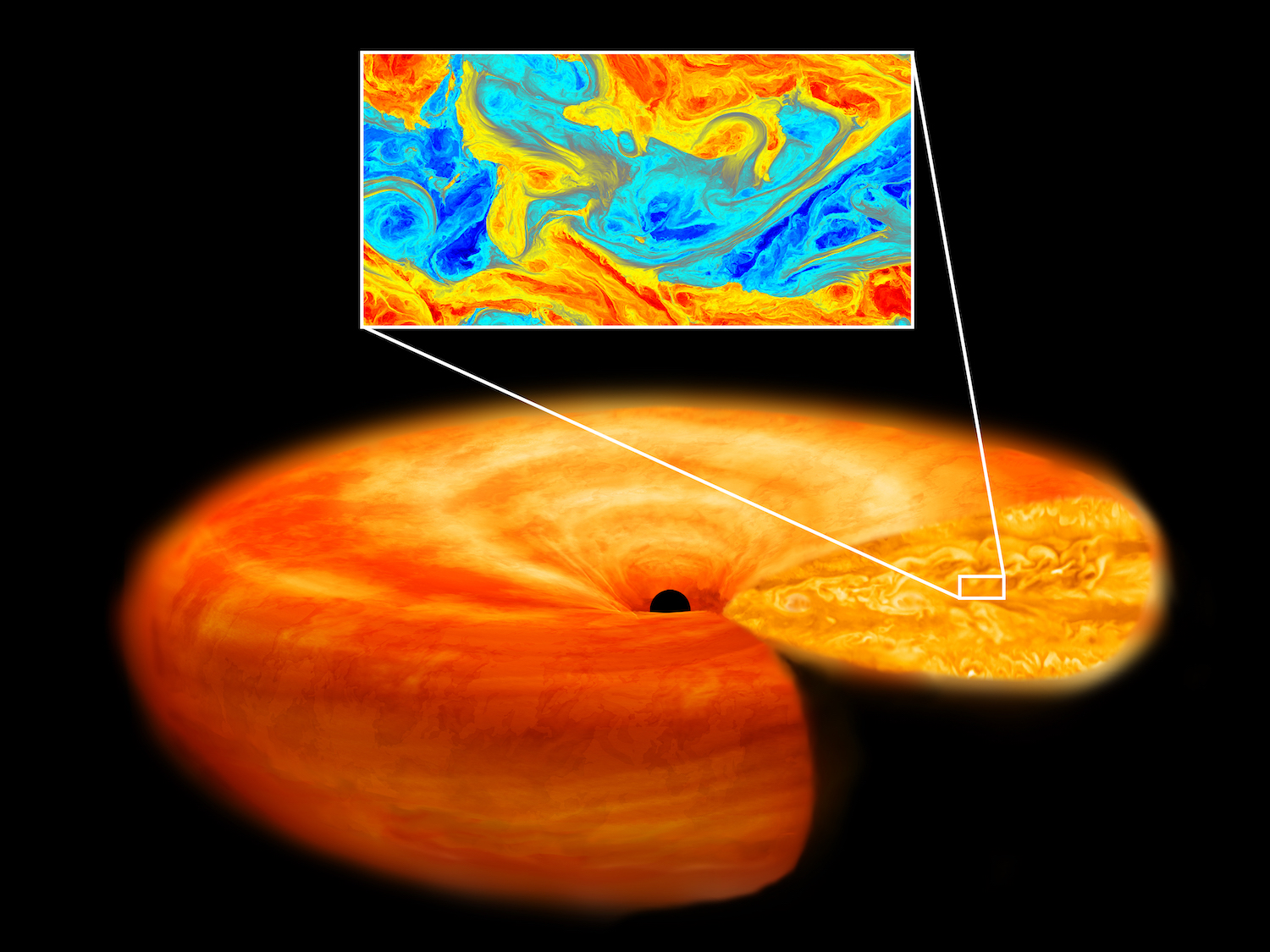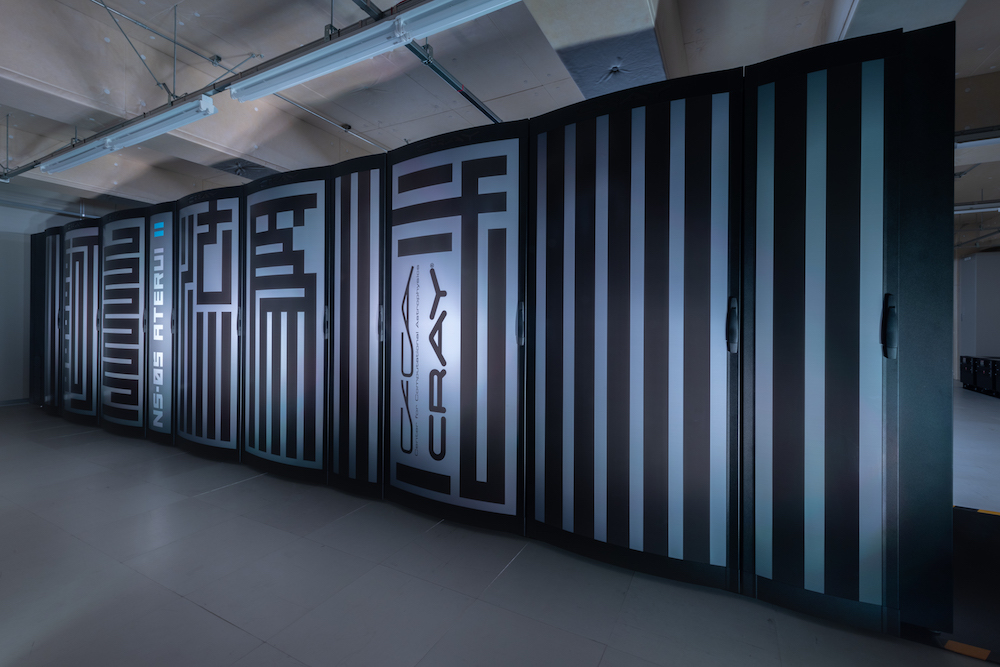Overview
Researchers at Tohoku University and Utsunomiya University have made a breakthrough in understanding the complex nature of turbulence in structures called “accretion disks” surrounding black holes, using state-of-the-art supercomputers such as RIKEN's "Fugaku" and NAOJ's "ATERUI II" to conduct the highest-resolution simulations to date. An accretion disk, as the name implies, is a disk-shaped gas that spirals inwards towards a central black hole.
The study was published in Science Advances on August 28, 2024. For more information, please read Press Release from Tohoku University. (August 29, 2024)

Download: [jpg (3.6 MB)]
Supercomputer used in this research
Publication Information
Title: "Inertial range of magnetorotational turbulence"
Authors: Yohei Kawazura and Shigeo S. Kimura
Journal: Science Advances
DOI: 10.1126/sciadv.adp4965
For the Use of Contents in This Website
- Contents are to be used with a clear indication of its copyright (e.g. (c) NAOJ.)
- If you would like to use the contents found in this web site, please follow Terms of Use of the Website of NAOJ.
Related Links
Tohoku University: "Supercomputer Simulations Reveal the Nature of Turbulence in Black Hole Accretion Disks"

